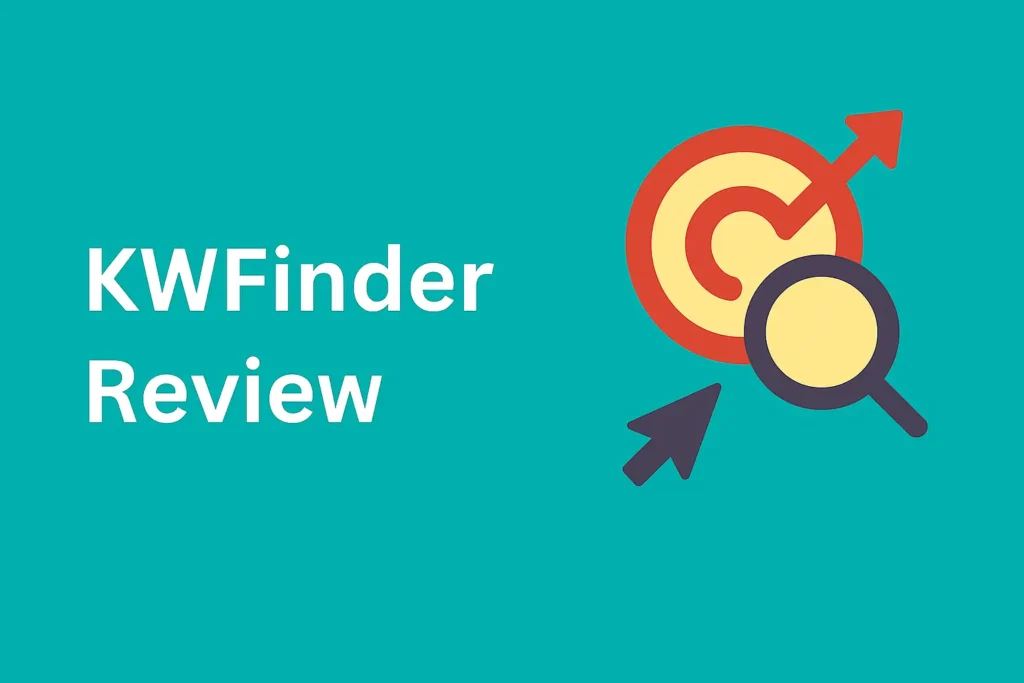Finding the right keywords can feel like searching for a needle in a haystack. You need terms with high search volume but low competition with a combination that’s becoming increasingly rare. This is where a dedicated keyword research tool becomes essential. KWFinder, developed by Mangools, has long been a favorite for its simplicity and powerful data visualization. But in 2025, with competition tougher than ever, is it still the right choice for you?
This in-depth KWFinder review will break down its core features, analyze its strengths and weaknesses, and help you decide if it’s the key to unlocking your website’s SEO potential. We’ll explore how it stacks up against other best keyword research tools on the market.
What is KWFinder?
KWFinder is a cloud-based keyword research tool designed to help you find hundreds of long-tail keywords with low SEO difficulty. It was created by Mangools, a developer known for creating a suite of user-friendly and effective SEO tools. KWFinder is the flagship product in their toolkit, which also includes:
- SERPChecker: To analyze search engine results pages (SERPs).
- SERPWatcher: For rank tracking.
- LinkMiner: A backlink analysis tool.
- SiteProfiler: To get a high-level overview of a website’s SEO metrics.
At its core, KWFinder takes the complexity out of keyword analysis and presents vital data—like search volume, keyword difficulty, and cost-per-click (CPC) in an intuitive, color-coded interface.
Who is KWFinder Best For?
While KWFinder can be used by anyone, it truly excels for a specific audience:
- Bloggers and Content Creators: Perfect for finding content ideas and targeting low-competition keywords to rank faster. If you’re just learning how to start a blog, this tool simplifies one of the most challenging steps.
- Small to Medium-Sized Businesses (SMBs): SMBs that need an affordable, effective SEO solution without the steep learning curve of enterprise-level platforms will find KWFinder ideal.
- SEO Beginners and Freelancers: The user-friendly interface and highly accurate keyword difficulty score make it an excellent starting point for those new to SEO.
- Niche Site Builders: KWFinder is brilliant for uncovering untapped, profitable keywords in specific niches.
KWFinder’s Key Features (In-Depth Analysis)
Let’s dive into the features that make KWFinder a compelling choice.
1. Keyword Research and Difficulty Score
The primary function of KWFinder is its keyword research engine. You can search for keywords in three ways:
- By Keyword: The standard approach where you enter a seed keyword to get hundreds of related ideas.
- By Domain: Enter a competitor’s URL to see the keywords they are ranking for. This is a goldmine for competitive analysis.
- By Autocomplete & Questions: Find long-tail keywords by scraping Google’s autocomplete suggestions and “People Also Ask” results.
For every keyword, KWFinder provides a Keyword Difficulty (KD) score, a number from 0 to 100. This score, calculated using metrics like Domain Authority and Page Authority of the top-ranking sites, is color-coded for quick assessment:
- 0-14 (Go for it): Super easy
- 15-29 (Easy): Low competition
- 30-49 (Possible): Medium competition
- 50+ (Hard): High competition, avoid unless you have a high-authority site.
In my experience, KWFinder’s KD score is one of the most accurate and reliable in the industry, especially for beginners who need a clear signal on whether a keyword is worth targeting.
2. In-Depth SERP Analysis (SERPChecker Integration)
Beside the keyword suggestions, KWFinder displays a SERP overview panel. This shows the top 10 URLs ranking for your target keyword, along with critical metrics for each:
- Domain Authority (DA)
- Page Authority (PA)
- Citation Flow (CF)
- Trust Flow (TF)
- Estimated Visits
This immediate SERP analysis is invaluable. It saves you from having to manually check Google and helps you quickly gauge the competition’s strength. Unlike some tools where SERP analysis is a separate step, KWFinder integrates it directly into the workflow, which is a huge time-saver. You can quickly see if the top pages are from high-authority sites or if there’s an opportunity for a newer site to rank. This makes it a great alternative to more complex tools discussed in our Semrush vs SimilarWeb comparison.
3. Local SEO and Language Targeting
KWFinder allows you to filter keyword data for almost any location (country, state, or even city) and language. This is a critical feature for businesses that target local customers or international audiences. You can verify if a keyword is popular in Mumbai but not Delhi, or see its search volume in Spanish versus English, ensuring your content is perfectly tailored to your target audience.
4. Keyword Lists and Management
As you discover promising keywords, you can save them to organized lists directly within the tool. This feature is essential for planning content calendars and managing multiple projects or clients. You can create lists like “Blog Post Ideas,” “Q4 Product Keywords,” or “Client X Campaign,” and export them as a CSV file whenever needed. It’s a simple but crucial feature for keeping your SEO strategy organized.
KWFinder Pricing
KWFinder is part of the Mangools subscription, which gives you access to all five of their SEO tools. The pricing is highly competitive, especially considering the value provided.
- Mangools Entry: Starts at around $29/month. Ideal for beginners and small projects, but with limitations on daily keyword lookups and SERP analyses.
- Mangools Basic: Starts at around $49/month. A popular choice offering a generous number of lookups and tracking, suitable for most bloggers and freelancers.
- Mangools Premium: Starts at around $69/month. Best for heavy users, agencies, and those managing multiple websites.
- Mangools Agency: Starts at around $129/month. Designed for large teams and agencies with very high usage needs.
They also offer a 10-day free trial which gives you a limited number of lookups per day, allowing you to test its full functionality before committing.
KWFinder Pros and Cons
No tool is perfect. Here’s a balanced look at where KWFinder shines and where it falls short.
Pros
- Excellent User Interface: Clean, intuitive, and beginner-friendly.
- Accurate Keyword Difficulty Score: The KD score is one of the most reliable on the market.
- Affordable Pricing: Offers incredible value for the price, especially compared to A-list competitors like Ahrefs or Semrush. For more on Semrush, check out our detailed Semrush review.
- All-in-One SEO Suite: The subscription includes four other useful tools (SERPChecker, SERPWatcher, LinkMiner, SiteProfiler).
- Fast and Responsive: The tool operates smoothly without lag.
Cons
- Limited Lookups on Cheaper Plans: The daily limits on the Entry and Basic plans can be restrictive for power users.
- Fewer Advanced Features: It lacks some of the deep technical SEO and site audit features found in more expensive, all-in-one platforms.
- Relies on Third-Party Data: Like many SEO tools, it uses data from sources like Moz (for DA), which may not always be perfectly up-to-date.
Final Verdict: Is KWFinder Worth It in 2025?
Absolutely. For its target audience, KWFinder remains one of the best keyword research tools available today. It strikes the perfect balance between powerful data, user-friendliness, and affordability.
While it may not have the exhaustive feature set of an enterprise-level tool like Semrush, it does its core job finding profitable, low-competition keywords exceptionally well. If you are a blogger, freelancer, or small business owner looking to step up your SEO game without a massive budget or a steep learning curve, KWFinder is an outstanding investment.
It simplifies the process of understanding search intent and competition, empowering you to create content that ranks.








